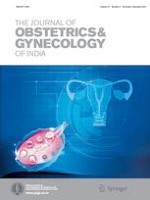Erschienen in:

04.11.2023 | Original Article
Prediction of Maternal Morbidity and Mortality Risk Among Women with Medical Disorders Presenting to Emergency Obstetric care (EMOC): A Prospective Observational Study
verfasst von:
Mecheril Balachandran Divya, Papa Dasari
Erschienen in:
The Journal of Obstetrics and Gynecology of India
|
Ausgabe 6/2023
Einloggen, um Zugang zu erhalten
Abstracts
Introduction
Medical disorders complicating pregnancy have recently emerged as the most common cause for maternal morbidity and mortality and it is important to predict mortality risk when they present in moribund state to emergency obstetric care so as to take and timely effective measures to prevent mortality.
Methods
This prospective observational study was conducted over 6 months among pregnant and post-partum women with medical disorders who sought emergency obstetric care at a tertiary care hospital. Severity of morbidity was assessed using SOFA and APACHE II scores at admission.
Results
Of the 128 women, 87.5% were pregnant, and 12.5% were post-partum. Hypertensive disorders, cardiac disorders, neurological disorders and infective disorders were 24.2%, 22.6%, 14% and 9.4%, respectively. The optimal cut-off SOFA score was 2 (AUC = 0.739) with 66% sensitivity and 71% specificity and APACHE II score cut-off was 6 (AUC = 0.732) with a sensitivity of 60% and specificity of 78% in predicting severe maternal morbidity. The median scores of APACHE II and SOFA are 14 and 4, respectively, for non-survivors and for survivors it was 4 and 1.
Conclusion
Hypertensive disorder was the most common medical disorder, but severity was high in cardiac disorder. SOFA and APACHE II scores are good predictors of morbidity and mortality risk.











